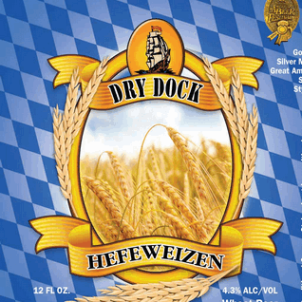Hey even though we act like it, we admit we don’t know everything. And one thing that’s cool to know more about is the kind of beer that you’re drinking. Every beer style has its own backstory, a hometown, and a reason why it came about. It’s all part of a beer’s DNA and we think that matters.
So welcome to the latest in our ongoing series (drum roll please…) “What the Hell Is a Hefeweizen?”
The Basics:
 Well, we’re guessing that you know a Hefeweizen is a type of wheat beer…but there’s a whole lot more going on with this style than you might think. First off – its name. “Hefe” means yeast in German and “Weizen” means wheat, so traditionally, a Hefeweizen refers to an unfiltered wheat beer with yeast in it. And it’s the wheat that defines it – Hefeweizens are top-fermented and use significant amounts of malted wheat. Sometimes as much as 50 to 65% of the mash is made up of wheat. That wheat is what gives this beer its refreshing crispness and light body.
Well, we’re guessing that you know a Hefeweizen is a type of wheat beer…but there’s a whole lot more going on with this style than you might think. First off – its name. “Hefe” means yeast in German and “Weizen” means wheat, so traditionally, a Hefeweizen refers to an unfiltered wheat beer with yeast in it. And it’s the wheat that defines it – Hefeweizens are top-fermented and use significant amounts of malted wheat. Sometimes as much as 50 to 65% of the mash is made up of wheat. That wheat is what gives this beer its refreshing crispness and light body.
They can also be highly carbonated and pour cloudy (that comes from the higher protein contained in wheat malt as well as from the type of yeast strain used). The classic Bavarian Hefeweizen tends to be fairly low in alcohol and gives off an aroma and taste commonly associated with banana, clove, and some say bubblegum – again, the result of the special yeast strain associated with authentic German wheat beers.
The Hefeweizen first surfaced in 16th century Bavaria and eventually came to America with the wave of German immigrants in the 19th century. Although its popularity was diminished for a time by the rise of light lagers on both sides of the Atlantic, the sale of wheat beers began to rise again after WWII, especially in Southern Germany. The Hefeweizen style is a staple for a great many American craft brewers today, where it’s viewed as a lighter option that complements their overall portfolios. American Hefeweizens differ from their Bavarian counterparts in that they are largely brewed with the same yeast strains that are used to brew their Pale Ales and Stouts.
Hefeweizen Style Beers We Like and You Might Want to Try:
 Live Oak HefeWeizen – (Austin, TX) – “Considered by many to be the best Bavarian-style Hefeweizen brewed in America”
Live Oak HefeWeizen – (Austin, TX) – “Considered by many to be the best Bavarian-style Hefeweizen brewed in America”
Dry Dock Hefeweizen – (Aurora, CO) – “A Great American Beer Festival Award winner”
Schlafly Hefeweizen – (St. Louis, MO) – “A solid example of the Americanized Hefeweizen style”
Our Take:
Hefeweizens, along with much of the wheat beer family, are commonly associated with summertime here in the states… and for obvious reasons. Their crispness, drinkability, and relatively low alcohol levels make a whole lot of sense when temperatures start cresting around 90 degrees. Like Lagers, we consider them to be part of the “lawnmower beer” family – perfect for that afternoon break when you’ve been working in the yard and want something that’s as refreshing as it is relaxing. Freed from the strict mandates that define their Bavarian brethren, American Hefeweizens can vary from brewer to brewer and that’s part of their warm weather charm. One final thing – some suggest that drinking your Hefeweizen with a lemon wedge in it is the way to go – and we couldn’t disagree more. A good Hefeweizen is a delicate animal and you don’t want to mask it.
For more in our ongoing “What the Hell Is?” series, check out:
What the Hell is a Kölsch
What the Hell is a Rauchbier
What the Hell is a Gruit Ale
What the Hell Is a Märzen?
What the Hell Is a Helles?
 American Craft Beer The Best Craft Beer, Breweries, Bars, Brewpubs, Beer Stores, And Restaurants Serving Serious Beer.
American Craft Beer The Best Craft Beer, Breweries, Bars, Brewpubs, Beer Stores, And Restaurants Serving Serious Beer.
